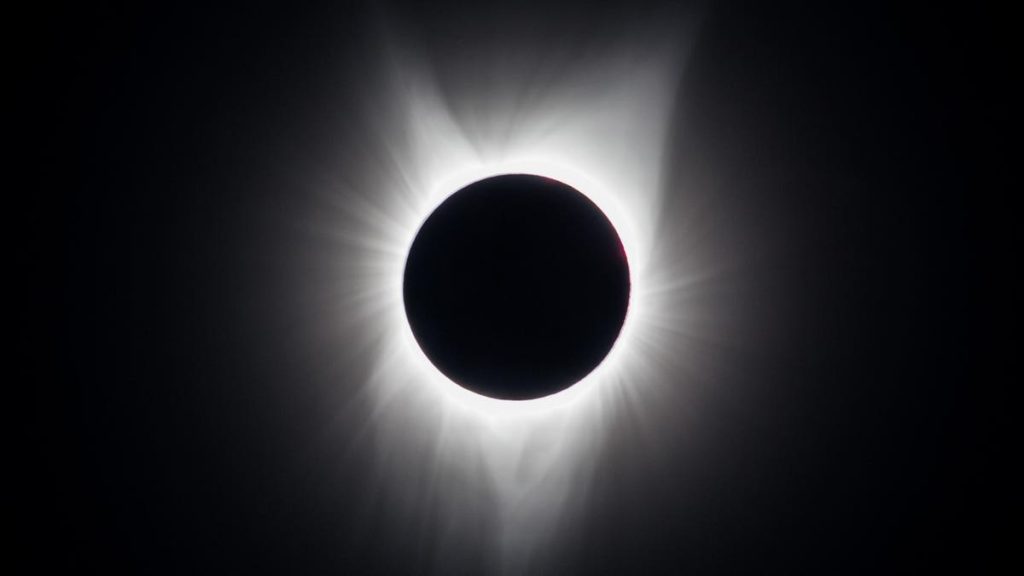We were somewhere around Moneta, Wyoming when the light began to fade. “It’s time to stop driving,” I said. “This is about to happen!” With the clouds behind us and clear skies now above, the side of a remote highway was were my wife and I would see the “Great American Eclipse.”
At exactly 11:40 a.m. the moon perfectly covered the sun, the light suddenly crashed and the temperature plummeted as a strange twilight took hold. The sun’s delicate corona revealed itself and, for precisely two minutes 22 seconds, we saw the sun as it truly is—a whitish spiky star floating in space.
Such transcendental moments of totality were experienced by about 12 million Americans that day, with about 215 million Americans seeing a partial solar eclipse or watching online on August 21, 2017.
America’s golden age of eclipses had begun—but the best is yet to come.
Here Comes The ‘Great North American Eclipse’
A total solar eclipse typically occurs in the same place on Earth centuries apart, but just six years, seven months and 18 days later the “Great North American Eclipse” will, on April 8, 2024, follow up on 2017’s“Great American Eclipse” with something arguably even more dramatic.
A totality lasting as long as 4 minutes 28 seconds will make sure of that, but this time there’s a lot more awareness. “It will be a much bigger event not only because more people live in the path, but also the memory and the imagery has lived on,” said Debra Ross, Co-Chair at the AAS Solar Eclipse Task Force and founder at Kids Out and About, in an interview. About 32 million live in the path of totality this time.
“People have heard the stories from 2017 and they want to make their own story—and this is going to be their last opportunity in the continental U.S. for 21 years,” said Ross.
‘Take Tuesday Too’
One enduring memory for many from 2017 was the drive home, with record-breaking traffic jams in the hours after totality. That’s something organizers are keen to avoid on April 8, 2024.
“We’ll have people coming from Boston, New York, Philadelphia and D.C. and many think that if they leave right after the eclipse they can get back by midnight,” said Ross, who’s based in Rochester slam on the centerline of the path of totality. “So we’ve got a video promoting the hashtag #TakeTuesdayToo to spread the word to visitors to take Tuesday to cut a little slack.”
Path Of Totality in 2024
The 115 miles wide path of totality will, on April 8, 2024, hit land at Mexico’s Pacific Coast and move though Mazatlan, Torreon and Durango and Torrean before crossing the Mexico-U.S. border at Texas. It will then continue through Oklahoma, Arkansas, Missouri, Illinois, Kentucky, Tennessee, Michigan, Indiana, Ohio, Pennsylvania, New York, Vermont, New Hampshire and Maine. In Canada those in Ontario, Quebec, New Brunswick, Prince Edward Island and Newfoundland will also host the path of totality before it ends as an eclipsed sunset north of the Azores.
While few big cities save for Nashville experienced totality in 2017, this time big cities like Dallas, Waco, Little Rock, Indianapolis, Cleveland, Rochester and Niagara Falls will do so, while many other big cities are on the edge of the path.
For those that will always remember the “Great American Eclipse”—and for those that missed it—the chance to experience totality for a second time will be irresistible.
Wishing you clear skies and wide eyes.
Read the full article here










